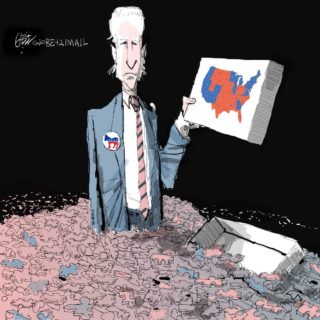As the world’s attention once again turns to Iran and Iraq, Patrick Martin’s “explainer” article details the key religious differences between Shia and Sunni sects of Islam, and explains the political significance of their competition to Middle Eastern politics. Although the article was first published almost six years ago, its historical and social data are still relevant.
Appropriate Subject Area(s):
Studies, current events, comparative religion studies
Key Question(s) to Explore:
- What are the differences and similarities between the Sunni and Shia sects of Islam, and how do they help shape the political landscape of Iran and Iraq?
New Terminology:
Sunni, Shia, Shiites, imam, caliphate, apostate, doctrinal, prophet
Materials Needed:
Globe article, Internet
Introduction to lesson and task:
Although the current conflict in the Middle East is focused on Iran and Iraq’s objection to the ongoing American military presence in the region, historical religious differences among Muslims continue to underlie regional tensions. Discussions of the issues inevitably include references to the Sunnis and the Shiites, the two most important Islamic sects in the region. Students can benefit from a short lesson on these religious groups, how they came to be, and their role and significance in the ongoing tension and violence in Iraq especially.
Following a brief discussion with the whole class, students will work alone to undertake a reading-retention exercise.
Action (lesson plan and task):
NOTE: This lesson can be enhanced if, at your discretion, you involve students who are Sunni or Shiite, or if they are knowledgeable about these sects. Consider asking them to assess the article, attached, for accuracy.
- Engage students in a discussion about recent events in Iraq—e.g., the US assassination of the Iranian military leader, the Iranian missile attack of January 7th, economic sanctions related to Iranian nuclear capability.
- Display a map of Iran, Iraq and their neighbours. Have students locate the major centres in the region—e.g., Baghdad, Tehran, Damascus, Riyadh. Have them conduct an Internet search on the dominant religions of the countries and regions. Note the roles of the Shia (majority population) and Sunni (minority population, but historical ruling class) sects in Iraq.
- Have students read the article silently, with the goal of being able to answer, in basic terms, the key questions Patrick Martin poses and answers. Ask students to circle or highlight words or phrases they don’t understand—take these up in class, later.
- When they have finished reading, quiz them for their best recollections of the answers to each question. For example, to the question, “Which branch (of Islam) rules Iraq?”, “The minority Sunni” would be a reasonable answer.
Follow up with a written assignment through which they answer the question, “How do the different sects of Islam in the region contribute to current conflict among the US, Iraqi and Iranian powers?” For a bonus, they can offer an opinion on their preferred version of the following statement: “The Americans should not/should maintain military bases in Iraq, as they now do.”
Consolidation of Learning:
- Students discuss their homework assignment in a subsequent class.
Success Criteria:
- Students can describe the fundamental differences and similarities of the Sunni and Shia sects of Islam, and the way they shape the political landscape of Iran and Iraq.
Confirming Activity:
- Students note media reports into the ongoing violence and tension in the Middle East, highlighting changes in the power structures relative to the main religious sects.

